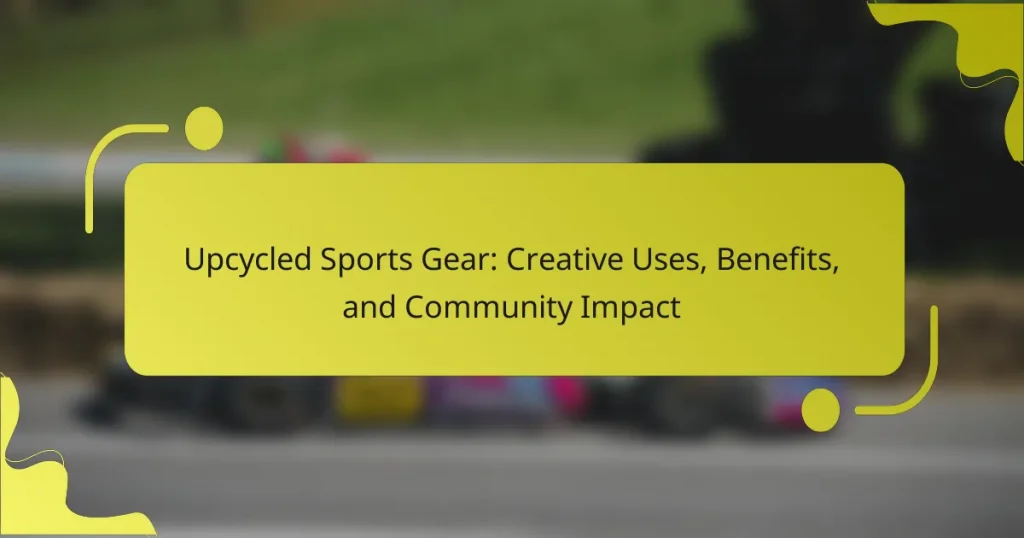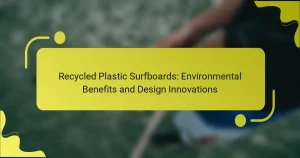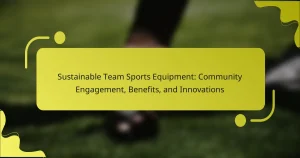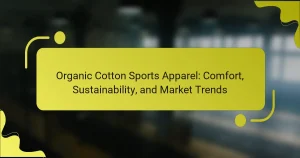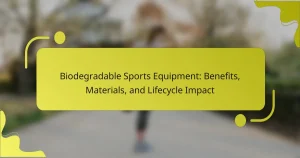Upcycled sports gear offers significant environmental benefits while fostering community engagement. This article explores creative uses of old equipment, highlights its positive impact on sustainability, and examines how it strengthens local economies. Additionally, it addresses the challenges businesses face in the upcycling process and showcases unique attributes of these innovative products. Finally, it emphasizes how consumers can support this movement through conscious choices and community involvement.
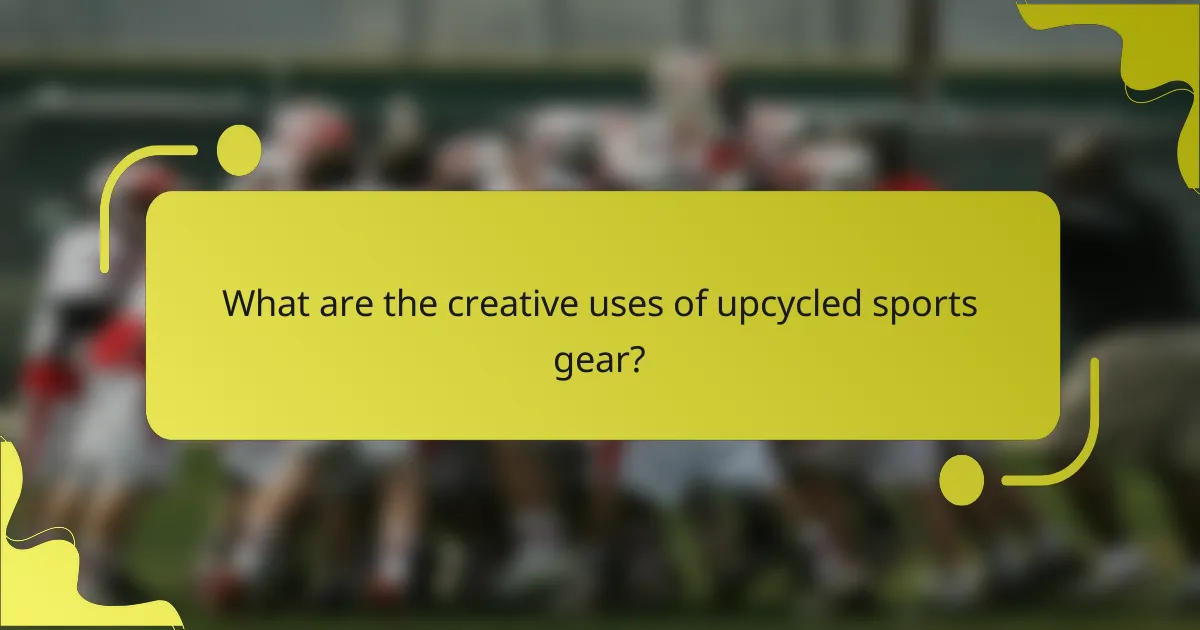
What are the creative uses of upcycled sports gear?
Upcycled sports gear can be creatively used in various ways, enhancing sustainability and community engagement. Common applications include turning old jerseys into tote bags, crafting mats from worn-out shoes, and repurposing equipment into home decor. These projects not only reduce waste but also foster community spirit through workshops and collaborative art initiatives. Upcycling sports gear offers unique benefits like promoting environmental awareness and supporting local artisans.
How can discarded sports equipment be transformed into functional art?
Discarded sports equipment can be transformed into functional art through creativity and resourcefulness. Artists and designers repurpose items like old tennis rackets, skateboards, and sports jerseys into unique sculptures, furniture, and home decor. This process not only reduces waste but also promotes sustainability. Upcycling fosters community engagement by encouraging workshops and collaborative projects, allowing individuals to share skills and ideas. Additionally, transformed items often carry a story, adding emotional value and connection to the art piece.
What innovative products can be made from upcycled sports gear?
Upcycled sports gear can be transformed into various innovative products such as bags, mats, and accessories. These items not only reduce waste but also promote sustainability in communities. For example, old tennis rackets can become wall art, while discarded jerseys can be repurposed into tote bags. This creative reuse fosters environmental consciousness and supports local artisans. Upcycling sports gear highlights the unique attribute of creativity in sustainability efforts.
Which organizations are leading the way in upcycling sports gear?
Several organizations are leading in upcycling sports gear, including Patagonia, Adidas, and The North Face. Patagonia focuses on repairing and recycling gear, promoting sustainability. Adidas has introduced initiatives like the Parley for the Oceans project, using ocean plastic in their products. The North Face’s Renewed program refurbishes used gear for resale, reducing waste. These organizations exemplify the benefits of upcycling by enhancing community impact and environmental responsibility.
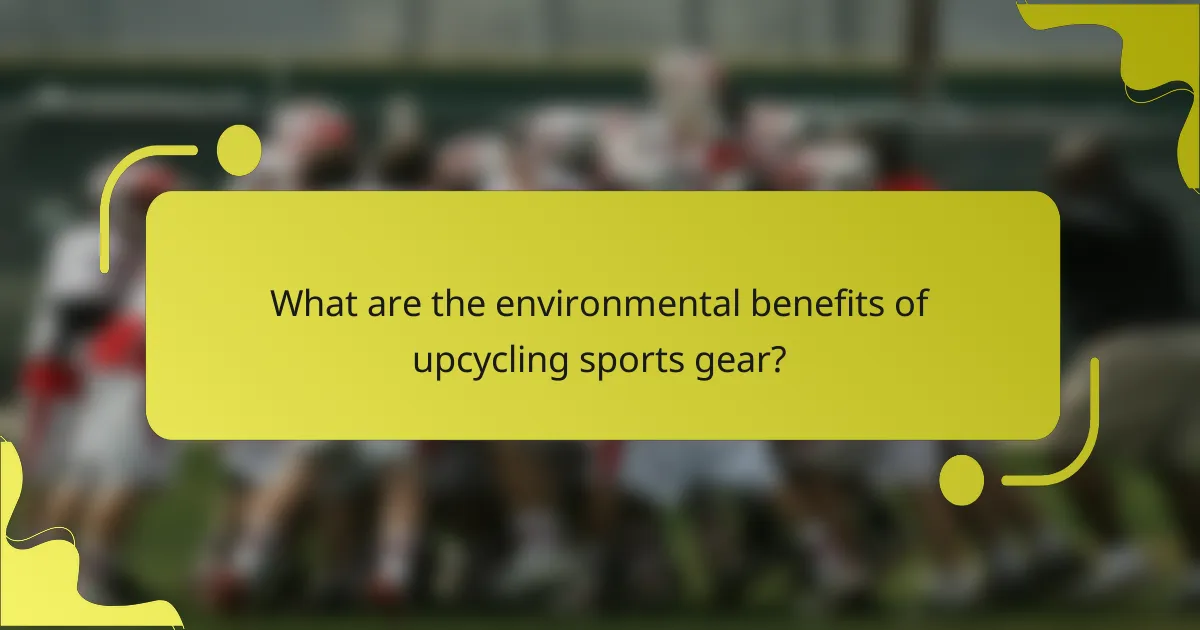
What are the environmental benefits of upcycling sports gear?
Upcycling sports gear significantly reduces environmental impact by minimizing waste and conserving resources. This practice diverts materials from landfills, promotes sustainable consumption, and encourages creativity within communities. Upcycled gear often features unique designs, showcasing individual artistry while supporting eco-friendly initiatives. As a result, the community fosters a culture of environmental awareness and responsibility.
How does upcycling reduce waste in landfills?
Upcycling sports gear significantly reduces waste in landfills by repurposing discarded items into functional products. This process diverts materials from waste streams, minimizing landfill contributions. For instance, turning old athletic shoes into new gear or accessories extends their lifecycle. As a result, communities benefit from reduced environmental impact and increased awareness of sustainable practices. Upcycling also fosters creativity, encouraging individuals to find innovative uses for materials that would otherwise be wasted.
What impact does upcycling have on carbon footprint reduction?
Upcycling sports gear significantly reduces carbon footprints by diverting waste from landfills and minimizing resource extraction. By repurposing materials, the process conserves energy and reduces greenhouse gas emissions. For instance, upcycled gear often requires less energy than producing new items, leading to a lower overall environmental impact. Additionally, community initiatives around upcycling foster awareness and encourage sustainable practices, amplifying the positive effects on carbon reduction.

How does upcycled sports gear benefit local communities?
Upcycled sports gear benefits local communities by promoting sustainability, creating jobs, and fostering social connections. This practice reduces waste, as discarded sports equipment is transformed into new products. Local artisans and organizations often engage in upcycling, which stimulates the local economy. Additionally, community programs that utilize upcycled gear can enhance access to sports and recreational activities for underserved populations. As a result, these initiatives strengthen community bonds and encourage healthier lifestyles.
In what ways does upcycling create job opportunities?
Upcycling creates job opportunities by fostering skills development, promoting entrepreneurship, and enhancing community engagement. It encourages the creation of new businesses focused on upcycled sports gear, which can generate local employment. For instance, workshops and training programs teach individuals how to transform discarded materials into valuable products, building a skilled workforce. Additionally, community initiatives often arise around upcycling projects, further stimulating local economies. These factors collectively contribute to job creation and economic sustainability in communities.
How can upcycled sports gear promote social inclusion?
Upcycled sports gear promotes social inclusion by providing accessible resources for diverse communities. It fosters teamwork and collaboration through shared activities, breaking down barriers among individuals. Programs utilizing upcycled gear often target underprivileged groups, enhancing participation in sports. This approach not only supports environmental sustainability but also cultivates a sense of belonging and community identity.

What challenges do businesses face in the upcycling process?
Businesses face several challenges in the upcycling process, including sourcing quality materials, managing costs, and consumer education. Sourcing involves finding suitable discarded sports gear that can be effectively transformed. Cost management is crucial, as upcycling often requires specialized labor and resources. Additionally, educating consumers about the benefits of upcycled products can be difficult, as misconceptions about quality and sustainability persist. These challenges can hinder the growth of upcycled sports gear initiatives and their community impact.
Which materials are most difficult to upcycle effectively?
Certain materials are particularly challenging to upcycle effectively due to their properties. Materials like PVC, which is common in sports gear, are difficult to recycle due to toxic emissions during processing. Additionally, materials such as neoprene and certain synthetic fabrics lack the necessary infrastructure for effective upcycling. The durability of these materials can hinder the ability to create new products, as they resist breakdown. Furthermore, the adhesive components in some sports gear complicate the separation process, making reuse or recycling more complex.
How can businesses overcome sourcing challenges for upcycled materials?
Businesses can overcome sourcing challenges for upcycled materials by building strong partnerships with suppliers and engaging local communities. Collaborating with organizations focused on sustainability can provide access to a diverse range of upcycled sports gear. Additionally, leveraging technology to track material availability and establishing transparent supply chains enhances reliability.
Investing in community education about the benefits of upcycled materials fosters a culture of sustainability. For instance, workshops can inspire local creators to innovate with upcycled gear, increasing the supply pool. As a result, businesses can not only source materials more effectively but also contribute positively to their communities, reinforcing brand loyalty and social responsibility.

What unique attributes distinguish specific upcycled sports gear products?
Unique attributes of upcycled sports gear products include innovative design, sustainability, and community engagement. For instance, some products utilize discarded materials like old climbing ropes, creating unique gear with a story. Others may feature limited edition items, enhancing their rarity and appeal. Additionally, brands often partner with local artisans, integrating cultural elements into their designs, which distinguishes them further in the market.
How does the quality of upcycled gear compare to new products?
Upcycled sports gear often matches or exceeds the quality of new products. Upcycling involves repurposing materials, which can enhance durability and uniqueness. Many upcycled items undergo rigorous quality checks, ensuring they meet performance standards. Additionally, the environmental benefits of upcycling contribute to a sustainable choice for consumers.
What are the most popular brands known for their upcycled sports gear?
Brands known for upcycled sports gear include Patagonia, Adidas, Nike, and Reebok. These companies creatively repurpose materials to reduce waste and promote sustainability. Patagonia’s Worn Wear program exemplifies this initiative, offering repaired and recycled gear. Adidas collaborates with Parley for the Oceans, transforming ocean plastic into athletic wear. Nike’s Move to Zero campaign focuses on minimizing waste through upcycled products. Reebok’s Cotton + Corn line uses organic materials, showcasing innovative approaches in the industry. These brands significantly impact the community by promoting eco-friendly practices and raising awareness about sustainability.
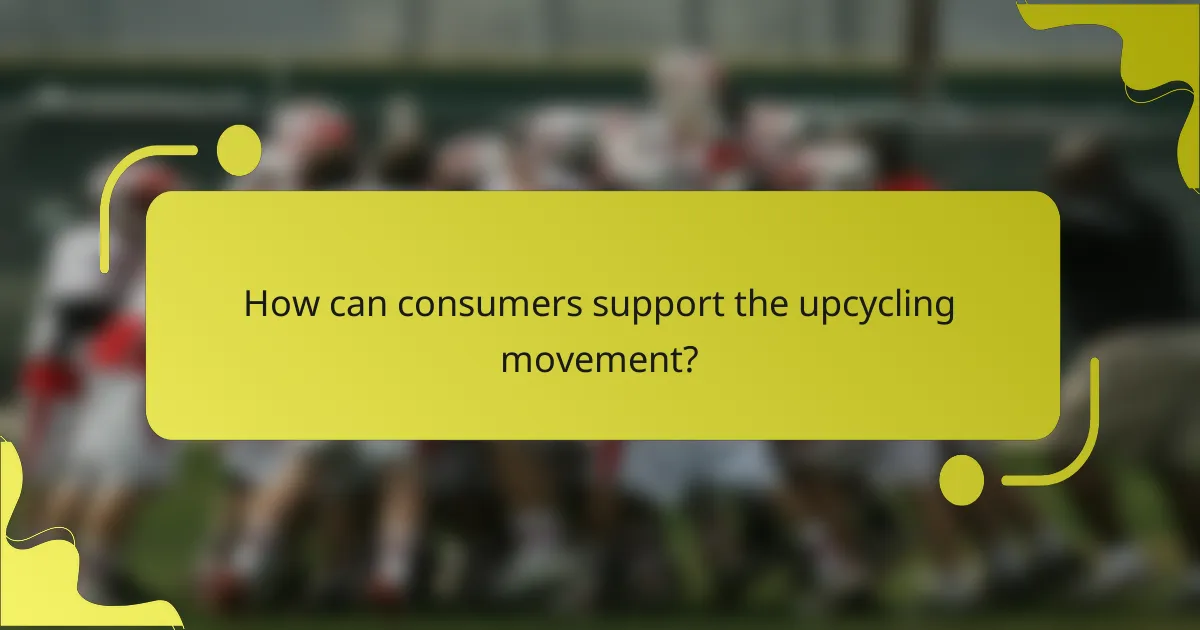
How can consumers support the upcycling movement?
Consumers can support the upcycling movement by choosing upcycled sports gear, promoting sustainability, and engaging with local communities. Upcycled sports gear reduces waste and encourages creativity. By purchasing these products, consumers contribute to environmental conservation and support local artisans. Additionally, participating in community events focused on upcycling fosters collaboration and awareness. Supporting brands that prioritize upcycling further amplifies the movement’s impact.
What are the best practices for choosing upcycled sports gear?
To choose the best upcycled sports gear, prioritize quality, functionality, and sustainability. Look for reputable brands that focus on eco-friendly practices and use durable materials. Consider the specific sports needs and how the gear enhances performance. A unique attribute to assess is the gear’s impact on reducing waste and supporting local communities. Finally, check for customer reviews to gauge satisfaction and reliability.
What common mistakes should consumers avoid when purchasing upcycled products?
Consumers should avoid common mistakes such as overlooking quality, ignoring sourcing transparency, and neglecting the product’s intended use. Prioritize durability and functionality, as upcycled sports gear must perform well. Verify the brand’s commitment to sustainability and ethical practices. Lastly, consider the environmental impact of the product’s lifecycle to ensure a positive community effect.
How can individuals get involved in local upcycling initiatives?
Individuals can get involved in local upcycling initiatives by participating in community workshops, donating old sports gear, or joining local environmental groups focused on sustainability. Engaging in these activities fosters creativity and promotes environmental awareness.
1. Attend workshops that teach upcycling techniques for sports gear.
2. Donate unused or damaged sports equipment to local organizations.
3. Join community clean-up events that focus on recycling and upcycling.
4. Collaborate with local artists or designers to create upcycled products.
5. Share your upcycling projects on social media to inspire others.
6. Advocate for local policies that support sustainable practices and upcycling initiatives.
